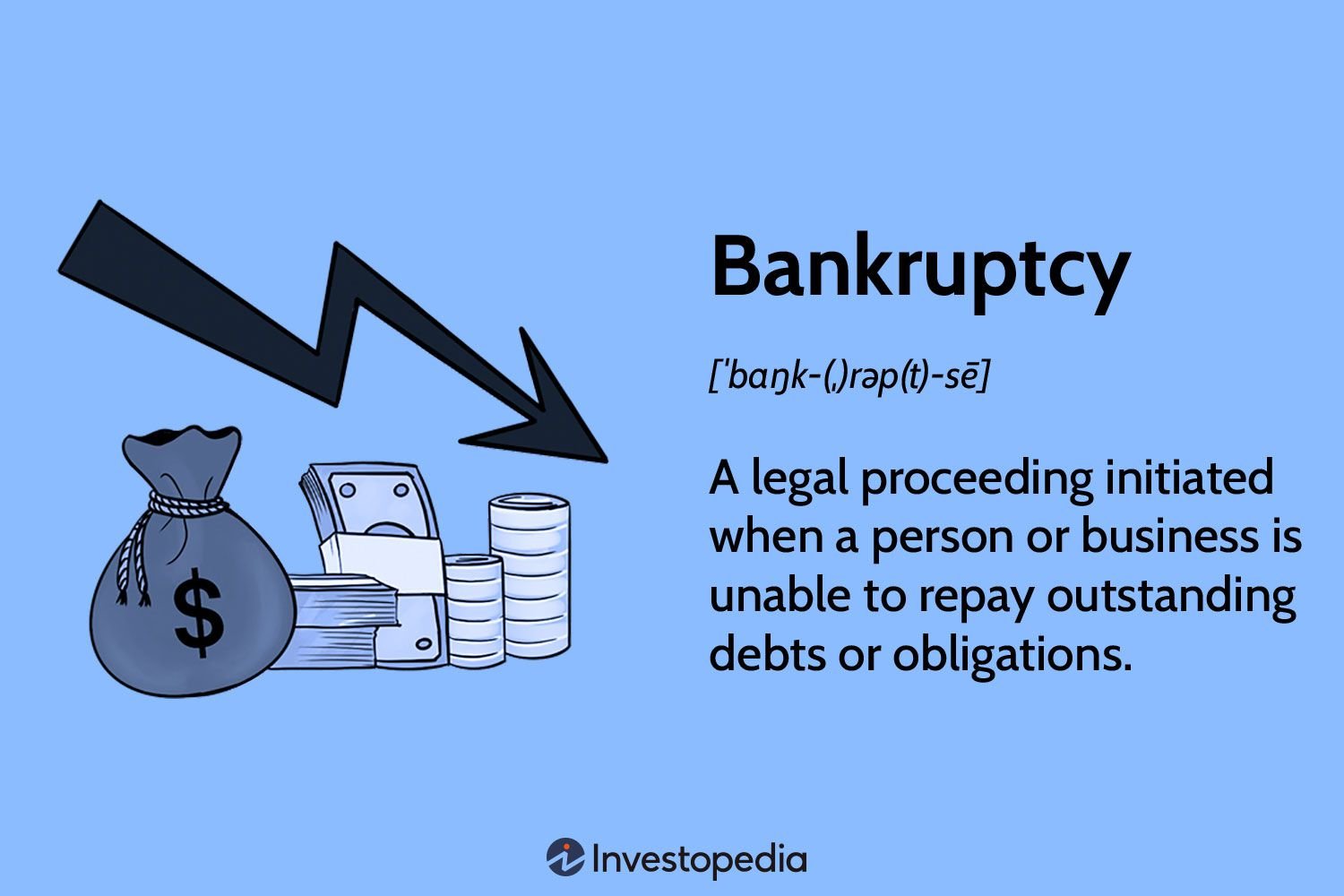Bankruptcy can be a daunting concept to navigate, but understanding bankruptcy and its types is crucial for anyone facing financial challenges. So, what exactly is bankruptcy? Put simply, it is a legal process that provides individuals or businesses with a fresh start when they are unable to repay their debts. By filing for bankruptcy, one can potentially find relief from overwhelming financial burdens and work towards rebuilding their financial future. In this article, we will delve into the various types of bankruptcy and shed light on the processes involved, giving you the knowledge necessary to make informed decisions. Let’s begin our exploration of understanding bankruptcy and its types.
Understanding Bankruptcy and its Types
In today’s unpredictable economy, many individuals and businesses find themselves facing financial difficulties. When debts become overwhelming and there seems to be no way out, bankruptcy can provide a fresh start. However, navigating the complex world of bankruptcy can be daunting and confusing. This article aims to shed light on the topic of bankruptcy, helping readers understand its types, implications, and potential benefits.
I. What is Bankruptcy?
Bankruptcy is a legal process that allows individuals or businesses to eliminate or repay their debts under the protection of the bankruptcy court. It provides relief to those overwhelmed by debt and gives them an opportunity to reorganize their finances. Bankruptcy is not a quick fix or a way to evade financial responsibility, but rather a means to get back on track and regain control over one’s finances.
II. Chapter 7 Bankruptcy
One of the most common types of bankruptcy is Chapter 7, also known as liquidation bankruptcy. In a Chapter 7 bankruptcy, an individual’s non-exempt assets are sold, and the proceeds are distributed among the creditors. This type of bankruptcy is available for both individuals and businesses. Here are some key points to understand about Chapter 7 bankruptcy:
1. Eligibility: To qualify for Chapter 7 bankruptcy, individuals must pass a means test, which compares their income to the median income in their state. If their income is below the median, they are usually eligible for Chapter 7. Otherwise, they may need to explore alternative bankruptcy options.
2. Automatic Stay: Once a Chapter 7 bankruptcy petition is filed, an automatic stay goes into effect, halting all collection actions by creditors. This provides immediate relief from creditor harassment, wage garnishments, and lawsuits.
3. Exemptions: Chapter 7 bankruptcy allows individuals to keep certain assets deemed essential for a fresh start. These exemptions vary from state to state but typically include necessities such as a home, car, clothing, and household goods.
4. Discharge of Debts: In Chapter 7 bankruptcy, most debts are discharged, meaning they are completely eliminated. However, not all debts are dischargeable, including child support, alimony, student loans, and certain taxes.
III. Chapter 13 Bankruptcy
Another common type of bankruptcy is Chapter 13, which is often referred to as reorganization bankruptcy or the wage earner’s plan. Chapter 13 allows individuals with a regular income to develop a plan to repay all or a portion of their debts over a period of three to five years. Here are the key features of Chapter 13 bankruptcy:
1. Repayment Plan: In Chapter 13 bankruptcy, individuals create a repayment plan that outlines how they will repay their debts over the designated period. The repayment plan is based on their income and expenses, and it must be approved by the court.
2. Protecting Assets: Unlike Chapter 7, Chapter 13 allows individuals to retain their assets while catching up on missed payments. This is particularly beneficial for those who want to avoid foreclosure on their homes or repossession of their vehicles.
3. Co-Debtors: Chapter 13 bankruptcy provides special protection for co-debtors. If someone has co-signed a loan with the debtor, the automatic stay prevents creditor collection actions against the co-debtor as long as the debtor complies with the repayment plan.
4. Discharge of Debts: Once the repayment plan is successfully completed, any remaining eligible debts are discharged. However, it’s important to note that some debts, such as child support, alimony, and certain taxes, may still need to be paid in full.
IV. Other Types of Bankruptcy
In addition to Chapter 7 and Chapter 13, there are other less common types of bankruptcy that may apply to specific situations:
1. Chapter 11 Bankruptcy: Chapter 11 is primarily designed for businesses but can also be used by individuals with substantial debts. It allows for reorganization and debt restructuring, enabling the debtor to continue operating while repaying creditors.
2. Chapter 12 Bankruptcy: Chapter 12 bankruptcy is specifically tailored for family farmers and fishermen. It provides a way for these individuals to reorganize their debts and continue their agricultural or fishing operations.
3. Chapter 9 Bankruptcy: Chapter 9 bankruptcy is exclusively available for municipalities, such as cities, towns, and counties. It allows them to reorganize their debts and develop a plan to meet their financial obligations.
V. The Impact of Bankruptcy
While bankruptcy offers a fresh start for those overwhelmed by debt, it does have some consequences that should be carefully considered:
1. Credit Score: Filing for bankruptcy will have a negative impact on an individual’s credit score. However, for people already struggling with significant debts, their credit score may have already been severely affected.
2. Public Record: Bankruptcy filings are a matter of public record, meaning anyone can access the information. This can potentially affect an individual’s reputation and may be a consideration for those in certain professions.
3. Future Borrowing: Bankruptcy may make it more challenging to obtain credit or loans in the future. However, with responsible financial management and time, individuals can rebuild their creditworthiness.
VI. Conclusion
Bankruptcy is a complex and sensitive topic that requires careful consideration and understanding. By familiarizing yourself with the different types of bankruptcy and their implications, you can make more informed decisions regarding your financial future. Bankruptcy can be a valuable tool for those facing insurmountable debts, providing relief and an opportunity for a fresh start. However, it’s essential to consult with a qualified bankruptcy attorney to navigate the process effectively and ensure the best possible outcome for your unique situation.
What Are The 3 Types Of Bankruptcy | Quick Overview
Frequently Asked Questions
Frequently Asked Questions (FAQs)
What is bankruptcy?
Bankruptcy is a legal process that provides individuals or businesses with relief from their debts when they are unable to repay them.
What are the different types of bankruptcy?
There are several types of bankruptcy, including Chapter 7, Chapter 11, and Chapter 13. Each type has its own specific rules and eligibility criteria.
How does Chapter 7 bankruptcy work?
Chapter 7 bankruptcy, also known as liquidation bankruptcy, involves the sale of the debtor’s non-exempt assets to repay creditors. It provides a fresh start by eliminating most unsecured debts.
What is Chapter 11 bankruptcy used for?
Chapter 11 bankruptcy is primarily utilized by businesses to reorganize their debts and continue operating. It allows the business to develop a plan to repay creditors while remaining in business.
Who is eligible for Chapter 13 bankruptcy?
Chapter 13 bankruptcy is available to individuals with a regular income and a manageable amount of debt. It allows debtors to create a repayment plan to pay off their debts over a period of three to five years.
Can bankruptcy eliminate all types of debts?
While bankruptcy can help eliminate many types of debts, certain obligations such as student loans, child support, alimony, and some tax debts may not be dischargeable.
Will bankruptcy ruin my credit?
Bankruptcy can have a negative impact on your credit score as it remains on your credit report for several years. However, with responsible financial management, it is possible to rebuild your credit over time.
Do I need an attorney to file for bankruptcy?
While it is not mandatory to hire an attorney, seeking legal advice is highly recommended when filing for bankruptcy. An attorney can guide you through the complex process, ensuring you understand your rights and obligations.
What are the consequences of filing for bankruptcy?
Filing for bankruptcy can have various consequences, such as the potential loss of assets, damage to credit, and limitations on future borrowing. However, it provides an opportunity for individuals and businesses to regain their financial stability.
Final Thoughts
Understanding bankruptcy and its types is crucial for individuals and businesses facing financial challenges. Bankruptcy offers a way to relieve debts and start fresh, but it’s essential to know the different types available. Chapter 7 bankruptcy, also known as liquidation bankruptcy, involves selling assets to repay creditors. Chapter 13 bankruptcy allows individuals to reorganize and repay debts over time. For businesses, Chapter 11 bankruptcy permits reorganization and continued operation. By familiarizing ourselves with bankruptcy and its varying types, we can make informed decisions when navigating financial difficulties.



